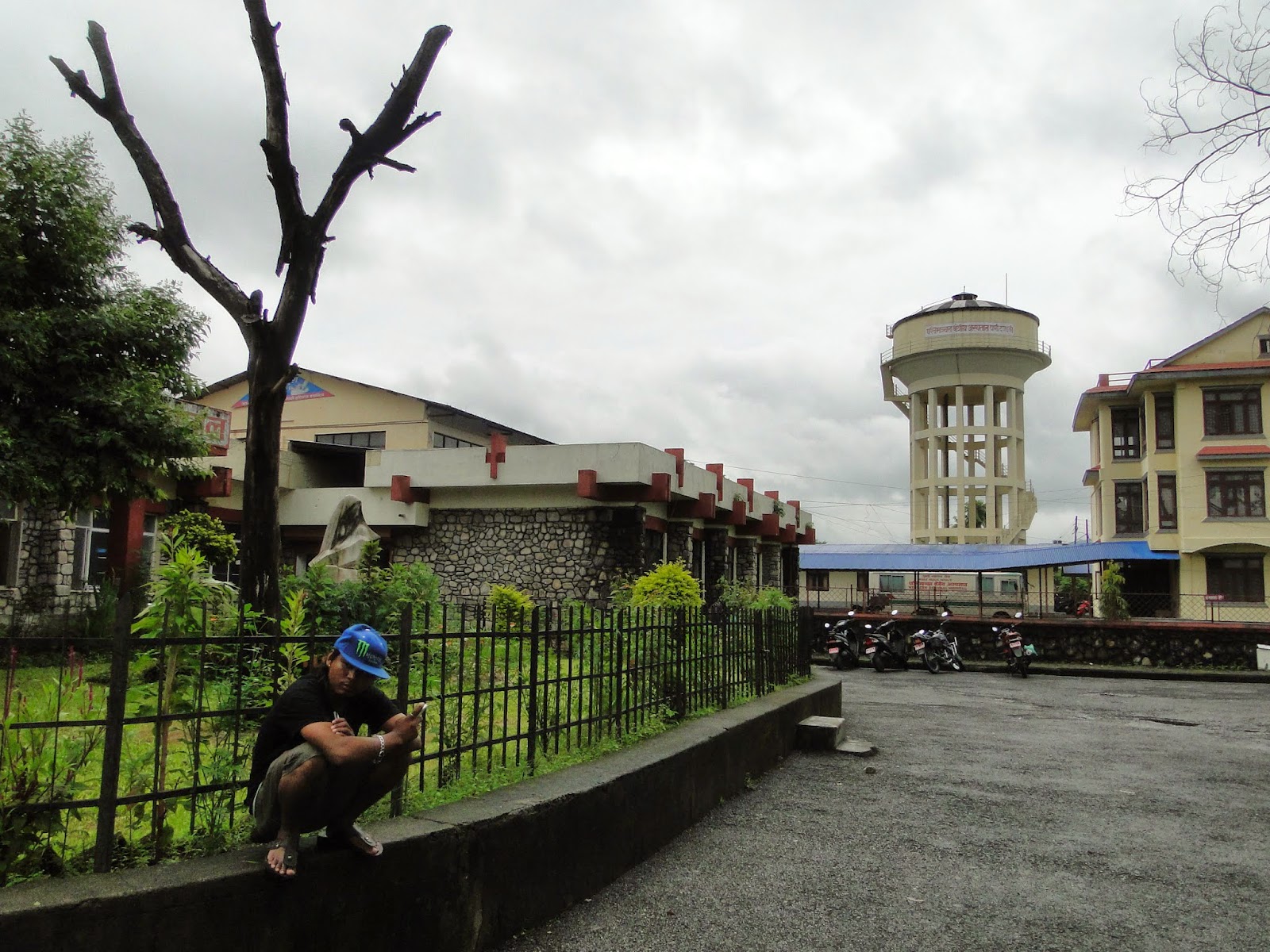Entrance to Western Regional Hospital, Pokhara
One thing that struck me is how involved families are in the immediate post natal stages. Given the lack of resources to keep babies warm immediately after delivery, babies are sometimes handed over to the family after they undergo post delivery care and drying. The family's job is to care for the baby as the mother is being transported to a post natal ward to clear space in the delivery room for the next woman in late stage labor. It really is like an assembly line, and when so many new lives are finding their way, the situation calls for all hands on deck. Walking through the postnatal wards, it was not uncommon to see a room of 8-10 beds with mother, baby, and accompanying family sitting on the same mattress. The saying goes that "it takes a village to raise a child." I'd say that it takes more than a hospital to deliver a baby.
We had an interesting conversation with a group of Skilled Birth Atendant (SBA) trainers. These trainers were responsible for modelling the correct techniques for natural and vacuum assisted deliveries, as well as evidence based care for the baby immediately after delivery. In Nepal, SBA trainees practice their technique on real babies most of the time since adequate training models can be hard to come by. Thus, SBA's sometimes start their formal roles with basic training plus lots of hearsay from their supervisors concerning more complicated cases of delivery or neonate care.
One of the main needs was more manpower. Looking at paid staff, sometimes the patient / provider ratio could get up to 20:1. Do you remember the last time you took care of 20 babies? I can't even imagine attempting it!
Talking to staff sisters in the NICU
Probing a bit deeper, we found that the ratio actually much better due to the fact that there are 10-11 additional sisters (as nurses are called here) who help out each shift. However, these additional sisters, even though they have completed their nursing degrees, are purely volunteers. Many of them could not find jobs elsewhere but they still come to give of their skills. The only compensation is for the sisters who volunteer for the night shift. At least they get a snack.
As we feasted on Thali, the traditional Nepali spread at lunch, I thought about how far these volunteer sisters were willing to go in order to ensure that each baby received their chance at life.
Thali with Dhindo-which feels like play doh- substituted for rice



vizajobs
ReplyDeletevizajobs
vizajobs
vizajobs
vizajobs
vizajobs
vizajobs
vizajobs
vizajobs
vizajobs
ReplyDeletevizajobs
vizajobs
vizajobs
vizajobs
vizajobs
vizajobs
vizajobs